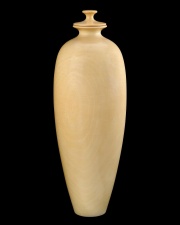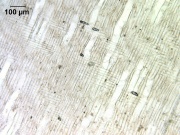Horse chestnut
Description
Any of several deciduous trees belonging to the genus Aesculus, native to temperate regions of the northern hemisphere. Horse chestnuts are common in Europe (A. hippocastanum) where the large shade trees line the Champs-Élysées in Paris. Other varieties are found in Japan (A. turbinata), India (A. indica) and the U.S. (A.glabra, which also known as the Ohio buckeye). While primarily grown as an ornamental tree, horse chestnuts have light, soft, tough, fine-grain wood. They are used for artificial limbs, splints, and as an important source for paper pulp. The trees produce inedible, dark-color, shiny nuts in the fall that have been used as odorless mothballs. Additionally the poisonous extracts were used on spears to stun fish and animals. In the 19th century children's game called conkers, each player swung a horse chestnut on a string in an attempt to dislodge that held by their opponent.
Synonyms and Related Terms
Aesculus hippocastanum; Aesculus turbinata; Aesculus indica; Aesculus glabra; tochi (Jap.) ; maronnier d'Inde (Fr.); castaño de Indias (Esp.); castanheiro da Índia (Port.); ippocastano (It.); horse-chestnut; conker; odorless mothballs; Ohio buckeye
Hazards and Safety
Leaves and seeds are poisonous.
Additional Information
Schoch, W., Heller, I., Schweingruber, F.H., Kienast, F., 2004:Wood anatomy of central European Species: Horse Chestnut,Aesculus hippocastaneum L.
Additional Images
Authority
- The American Heritage Dictionary or Encarta, via Microsoft Bookshelf 98, Microsoft Corp., 1998
- Encyclopedia Britannica, http://www.britannica.com Comment: Encyclopædia Britannica [Accessed December 13, 2002]. -Champ-Elysse; Sapindales" Encyclopædia Britannica [Accessed December 13, 2002].
- Website address 1 Comment: Museum of the Japanese Traditional Arts at http://www.nihon-kogeikai.com/ (Jap. term)



